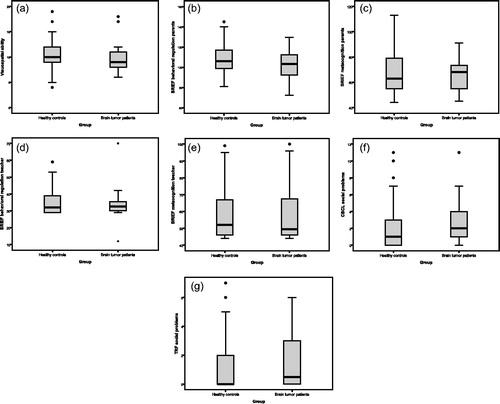Figures & data
Figure 1. Simplified model of social competence. An adapted version of Yeates’ integrative, heuristic model of social competence in children with brain disorders.Citation5

Table 1. Demographic and environmental characteristics of brain tumor patients (N = 30) and healthy controls (N = 95).
Table 2. Clinical characteristics of brain tumor patients (N = 30).
Table 3. Age corrected scores based on published Dutch normative data of the brain tumor patients that were assessed before (N = 15) or after surgery (N = 14) for tumor removal and healthy controls (N = 95).
Table 4. Outcomes on measures of verbal IQ, social-affective functions, executive functions and social adjustment for brain tumor patients (N = 30) and healthy controls (N = 95).
Figure 2. Boxplots of performances of brain tumor patients (N = 30) and healthy controls (N = 95) on visuospatial ability, executive functions and social adjustment.
Note. BRIEF = Behavior Rating Inventory of Executive Function; CBCL = Child Behavior Checklist; TRF = Teacher Report Form; A) N = 19 brain tumor (BT) patients and N = 91 healthy controls B) N = 27 BT patients and N = 87 healthy controls; C) N = 27 BT patients and N = 87 healthy controls; D) N = 16 BT patients and N = 79 healthy controls; E) N = 16 BT patients and N = 79 healthy controls; F) N = 22 BT patients and N = 72 healthy controls; G) N = 10 BT patients and N = 70 healthy controls.

